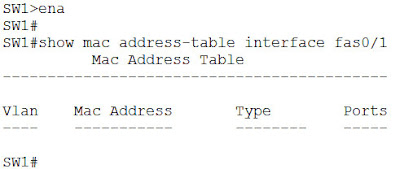- Download Packet Tracer file here to proceed with the lab.
NOTICE!
I have changed one of the issues in comparison to original book as Packet Tracer does not support duplex mis-matches. In case you manually change duplex, the port of Branch router becomes disabled without possibility of enabling it. Task 3 is different giving you a chance to solve connectivity issue.
Once you have downloaded the packet tracer file with configuration broken you must solve two problems:
- PC1 reports the problem with network connectivity.
- PC2 and PC2 report problem accessing their default gateway 10.1.1.1 (Branch router).
Here are your tasks (task 1 and task 2 are in our previous lab).
Topology Diagram
Task 2: Connectivity issues between the PC1 and the Switch.
Task 3: Connectivity issues between the PCs and the Router.
In case you could not solve the problem, here is my thought process while creating solution (there are many other ways of solving these issues).
Solution
Task 2: Connectivity issues between the PC1 and the Switch.
Let's verify if PC1 can ping SW1 management address (10.1.1.11) and/or PC2 address (10.1.1.101). The result is as illustrated in the picture below:
The ping times out. At this point one of the troubleshooting steps would be to verify if PC1 has Layer 1 and Layer 2 connectivity to the SW1. This can be checked by inspecting ARP table on PC1. Remember, that in order to send the ICMP Echo message using ping (ICMP is layer3 protocol), PC1 must first obtain MAC Address of 10.1.1.11. This is done by sending Layer 2 broadcast (ARP is Layer 2 protocol). When that happens, SW1 should learn dynamically MAC Address of PC1 and map it to the incoming port Fas0/1 in the Content Addressable Memory (MAC Table).
Let's see if arp cache on PC1 shows MAC address mapped to 10.1.1.11 first.
Clearly, SW1 management interface Vlan 1 did NOT respond with ARP reply. That proves that Layer 2 connectivity is broken between PC1 and SW1. To further support this notion, MAC address table (Layer 2 information) should not be present on SW1 in relation to port Fas0/1. Let's verify that too:
Indeed, SW1 did NOT learn the MAC Address of PC1 on port Fas0/1!
If Layer 2 connectivity is broke, let's verify Layer 1 status of port Fas0/1 on SW1 by using show int fas0/1 (remember that 'show int status' does not work in Packet Tracer):
Clearly, the port is disabled by using 'shutdown' command. That is why neither Layer 1 nor Layer 2 are operational. A quick fix is to bring the port back up:
SW1#
SW1#conf t
Enter configuration commands, one per line. End with CNTL/Z.
SW1(config)#int fas0/1
SW1(config-if)#no shutdown
Now, let's verify the connectivity between PC1 and SW1 IP Address again:
The first ping fails (time out) on doing ARP Request, but subsequent attempts are successful.
Now, let's see how SW1 learned MAC Address of PC1 and mapped it to the port Fas0/1 in its MAC Address Table. First let's learn MAC address of our PC1:
And back to SW1 (you must do it very quickly as Packet Tracer seems to age those learned MAC Address faster than original switch which uses 5 min.):
SW1#conf t
Enter configuration commands, one per line. End with CNTL/Z.
SW1(config)#int fas0/1
SW1(config-if)#no shutdown
Now, let's verify the connectivity between PC1 and SW1 IP Address again:
The first ping fails (time out) on doing ARP Request, but subsequent attempts are successful.
Now, let's see how SW1 learned MAC Address of PC1 and mapped it to the port Fas0/1 in its MAC Address Table. First let's learn MAC address of our PC1:
And back to SW1 (you must do it very quickly as Packet Tracer seems to age those learned MAC Address faster than original switch which uses 5 min.):
Task 3: Connectivity issues between the PCs and the Router.
Now, checking Layer 3 connectivity between PC1 and Branch router:
Ping fails (time out), and also, in the ARP Table PC1 does not have mapping between 10.1.1.1 and its MAC Address.
Now, I'd like to confuse you a little bit, so that you can learn something in the process. Let me hop on over to Branch router and ping PC1 from it (I know you think it is a stupid test since PC1 could not get reply from Branch, but bear with me...).
Hmm... first ping failed on doing ARP request but rest of the packet got the echo reply message.
WOW! What just happened?!
How come ping from Branch works, but not from PC1?
Do the ping from Branch router towards PC1 again and quickly inspect PC1 ARP Table!
Look at the topology table and check which device has IP Address of 10.1.1.10!
NONE! There is no such device in our topology. So how did PC1 learn MAC Address of 10.1.1.10?
While pinging from Branch router towards PC1, the latter had to pick up the MAC address of the sending device!
Conclusion!
Branch router must have had its IP Address changed from 10.1.1.1 to 10.1.1.10. Let's verify that!
In order to fix it do the following:
Branch#conf t
Enter configuration commands, one per line. End with CNTL/Z.
Branch(config)#int fas0/0
Branch(config-if)#ip address 10.1.1.1 255.255.255.0
Branch(config-if)#end
Branch#wr
Enter configuration commands, one per line. End with CNTL/Z.
Branch(config)#int fas0/0
Branch(config-if)#ip address 10.1.1.1 255.255.255.0
Branch(config-if)#end
Branch#wr
Job done! So far Packet Tracer does the job more or less.











